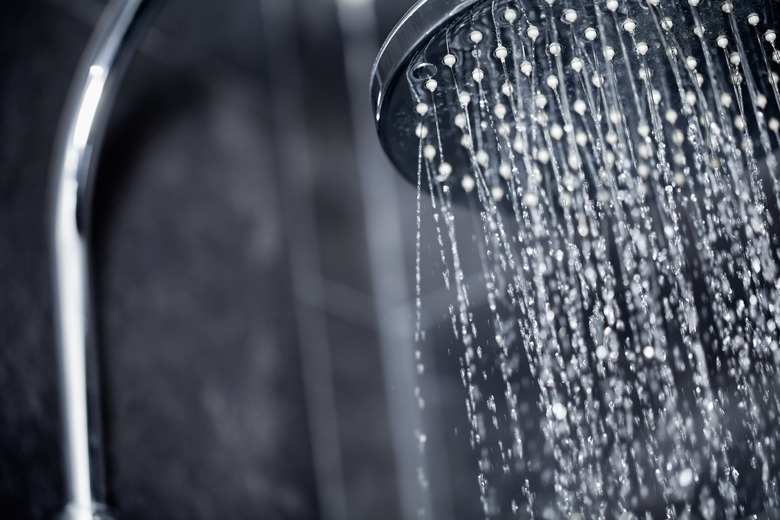Troubleshooting A Shower That Doesn't Get Hot
We may receive a commission on purchases made from links.
If your shower water is not hot enough or never gets hot, there are several potential problems. Some shower plumbing problems are very common and simple to fix; others require more attention by a professional. If you are experiencing cooler water temperatures, look at a few signs first to find out what is going on.
Shower Cartridge Issues
Shower Cartridge Issues
A lack of hot water in just your shower is a sign of a problem with the shower faucet. Inside the faucet is a cartridge that mixes hot and cold water together to form the warm water you bath in. If this part breaks or the surface of one of the discs inside the cartridge scratches, it will not operate properly.
The result is cool water when it should be hot. To fix this, replace the faucet cartridge by taking off the handle to the faucet, removing the bonnet or retaining nut, and installing a new faucet cartridge. Consult your user manual for a compatible faucet cartridge. If this doesn't fix the problem, you might have a water heater issue.
Water Heater Turned Off
Water Heater Turned Off
Check other faucets in your home. If all the faucets have no hot water, the problem most likely belongs to the water heater, which is the device that heats up the incoming water to the home. The water heater may be turned off.
Check the circuit box to see if the circuit switch labeled "water heater" is set to "Off." If it is, turn it back on and wait about an hour for the water heater to heat your water. Try the shower again to see if the water is hot.
Water Heater Malfunction
Water Heater Malfunction
If the water heater breaker is on, the water heater may have a bad element. This is the part inside the water heater that actually provides the heat. It is similar to an oven element. These parts need replacing after normal usage.
The water heater must be drained through a hose or with a drainage pan. The heater is then taken apart and the elements removed and replaced with new ones before filling the water heater again. This project is involved and usually is best left to a professional unless you are experienced enough to handle it yourself.
Shower Faucet Scald Guards
Shower Faucet Scald Guards
Some shower faucets have anti-scald guards or temperature control features, which raise or lower the overall temperature the faucet delivers. If you lack hot water in just the shower, take off the handle to the faucet by removing the set screw and pulling it off.
Look for a round plastic dial on the end of the faucet, right under the handle. Adjust the dial by turning it clockwise to increase the temperature of the faucet. Adjusting the dial allows more hot water to pass through the cartridge in the faucet and therefore will increase the total overall temperature of that particular shower.
You may need to make several slight adjustments to get the water temperature just right. Turn the anti-scald device a little at a time, testing the water after each adjustment, until you reach the desired temperature before replacing the faucet head or handle.
